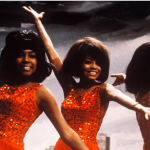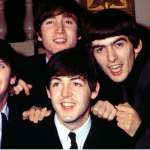“Backstabber” – The Dolls

“Backstabber” by The Dolls: A Glam Rock Anthem of Betrayal and Rebellion
“Backstabber,” performed by The Dolls and released in 1973, is a quintessential example of the raw, unfiltered energy that defines early glam rock. Known for its rebellious spirit and distinctive sound, the song encapsulates the essence of The Dolls’ style while addressing themes of betrayal and personal conflict.

The song’s lyrics center on the theme of betrayal, capturing the emotional intensity and sense of betrayal that comes with being double-crossed by someone trusted. Lines like, “You thought I’d be around, but I’m gone, oh yeah, you’re a backstabber,” convey a sense of anger and disillusionment. The lyrics reflect the frustration of dealing with deceit and the end of a once-trusted relationship.

Musically, “Backstabber” is characterized by its energetic glam rock sound, featuring powerful guitar riffs and a driving rhythm. The song’s raw production and spirited performance are hallmarks of The Dolls’ style, showcasing their ability to blend rock ‘n’ roll with a sense of theatricality. The energetic instrumentation and catchy chorus contribute to the track’s memorable quality, making it a standout in the glam rock genre.

The Dolls, led by frontman David Johansen, were known for their provocative and flamboyant image, and “Backstabber” is a reflection of their defiant and edgy persona. The song’s themes of betrayal and rebellion resonate with the broader cultural attitudes of the time, reflecting a sense of disillusionment and defiance against societal norms.

In conclusion, “Backstabber” by The Dolls is a powerful glam rock anthem that captures the raw energy and rebellious spirit of the early 1970s. Its exploration of themes related to betrayal, combined with its energetic musical arrangement and distinctive style, makes it a notable track in the glam rock genre. The song’s ability to convey emotion and defiance ensures its place as a memorable and influential piece in The Dolls’ discography.











